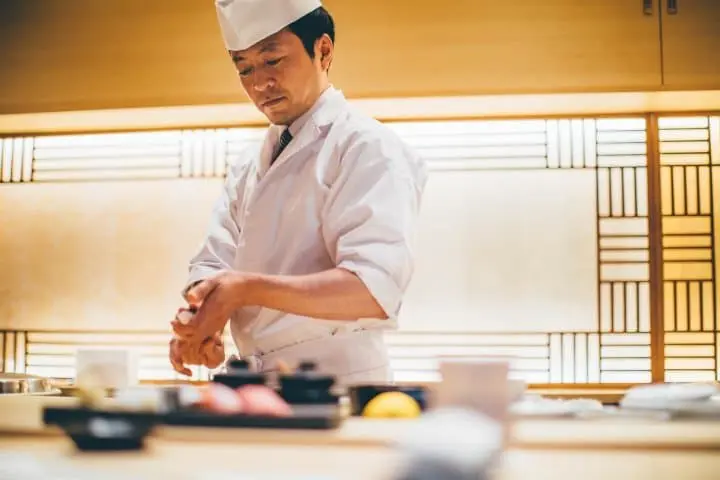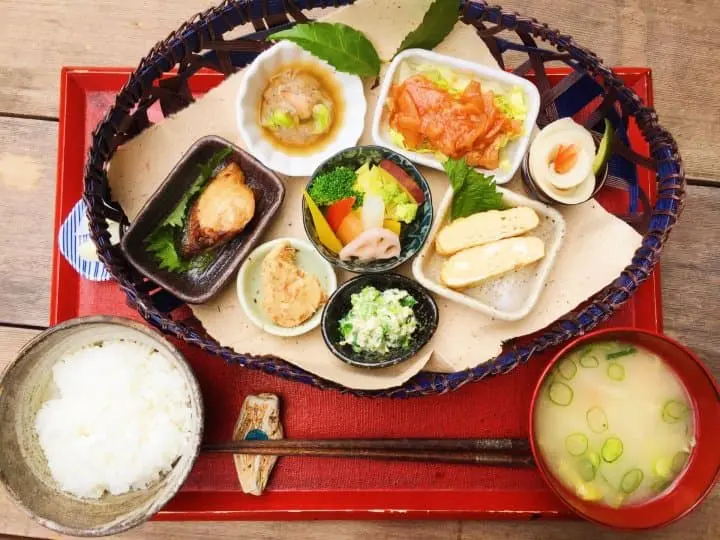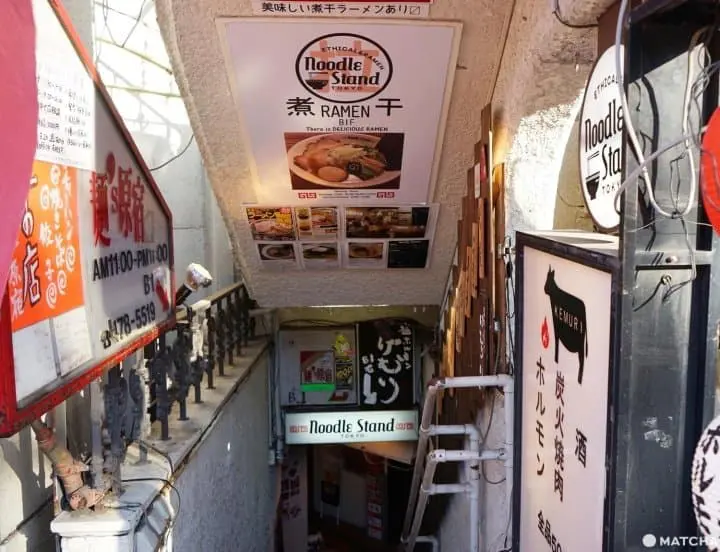How To Eat Out In Japan: A Guide To Restaurants, Ordering, And Manners

Eating out in Japan is a one-of-a-kind experience all can enjoy, from Michelin-starred restaurants to excellent service. Learn how to order, what to expect when dining out, and manners to enjoy and encounter the complexities of Japanese culture through food.
Eating Out in Japan - Restaurants, Ordering, and Ettiquete

With the highest number of Michelin starred restaurants in the world and Japanese cuisine's designation as a UNESCO Intangible Cultural Heritage, Japan is undoubtedly one of the best countries to enjoy fine dining.
This article covers all you need to know about eating out in Japan, including common types of restaurants, how to order and pay the bill, what to expect at a restaurant, and manners.
Guide to Dining Out
1. Types of Restaurants in Japan
2. Average Costs of Eating Out
3. Entering a Restaraunt
4. Making Reservations
5. Ordering Food
6. Eating Vegetarian or with Dietary Restrictions
7. Paying for Your Meal
Types of Restaurants in Japan

Japan has a wide variety of restaurants of all styles, ranging from very high end to mid-range and fast food. Common dish types and chain restaurants you will find are listed below.
| Cuisine Type | Location | Chains/Famous Eateries |
| Sushi | Nationwide | Sushi Zanmai, Sushi Chiharu |
| Ramen | Nationwide, varieties vary widely by region | Ichiran, Afuri, T's Tantan |
| Gyudon (Beef Bowl) | Nationwide | Yoshinoya, Hiroshige |
| Udon, Soba | Nationwide, famous in Kagawa, Nagano, Niigata | Hanamaru Udon, Fuji Soba |
| Izakaya (Japanese pub) | Nationwide | YORU ILCA, Torikizoku |
| Shabu-shabu, hot pot | Nationwide | Nabezo, Onyasai |
| Curry | Nationwide | CoCo Ichibanya, PQ's |
| Yakiniku (Japanese Barbecue) | Nationwide | Misono, Jiromaru |
| Okonomiyaki | Nationwide, famous in Osaka and Hiroshima | Tsuruhashi Fugetsu, Reichan |
| Japanese Sweets | Nationwide | Kaikaro, Umezono |
The types of restaurants listed above are just a handful of where you can dine in Japan. Visitors can also enjoy international cuisine. Chinese and Italian food is very popular, as well as Indian-style curry and Korean food. British-style pubs are also found in large cities and a popular choice for evenings out.
International fast food chains, like McDonald's and Burger King, are very popular in Japan, and have specialty items unavailable in other countries.
↑ Return to the top of the article.
Average Costs of Eating Out in Japan

On average, it costs between 1,000 to 3,000 yen for meals in Japan. This varies widely depending on the meal, if it is lunch or dinner, or if you are in Tokyo (Tokyo has the most expensive prices) or not. Below is what you can expect to pay for a meal in Japan by type of food.
| Meal Type | Average Cost |
| Sushi | 600 yen to 20,000 yen for a chef's course |
| Beef bowl, Tempura bowl | up to 1,000 yen at chain restaurants |
| Ramen | 800 yen to 1,500 yen |
| Udon, Soba | up to 1,500 yen |
↑ Return to the top of the article.
Entering a Restaurant

A restaurant located on the basement level. Picture from Ramen For All - Eat Local And Ethical At Noodle Stand Tokyo, Harajuku
After deciding on a restaurant to go to, walk through the front door. In cities, some restaurants will be on the upper floors or in the basement of a building with other restaurants or businesses. After going inside, wait at the front for an employee to attend to you. You will hear employees saying "Irrashaimase" to welcome you.
Next, they will ask you how many people are in your party (you may have to use your fingers to show them) and lead you to your seat.
At restaurants and izakaya with low tables and tatami, be sure to take your shoes off at the front entrance. Put your shoes in the lockers available first before walking to the main restaurant area. Take the locker key with you and bring it back after your meal.
Smoking and Non-Smoking Sections
A little less than one-third of males in Japan smoke tobacco.* Some restaurants in Japan allow smoking entirely or have smoking sections. For those wanting to avoid this, be sure to look for a non-smoking eatery (usually marked outside the restaurant). Also, if a restaurant allows partial tobacco use, the employee will ask you if you want a smoking or a non-smoking seat before they take you to a table.
Smoking is usually allowed at establishments with mature customers, like izakaya and bars, as well as old-style cafes.
However, more and more restaurants are banning smoking as awareness of secondhand health effects due to tobacco increases in Japan.
*As of 2018, around 27.8% of males and 8.7% of females of legal age in Japan smoke tobacco, according to statistics presented on the Japan Health Promotion & Fitness Foundation (Japanese link).
↑ Return to the top of the article.
Making Reservations

Most reservations at restaurants in Japan are made by telephone. You do not need a reservation for most casual restaurants, and some places, including ramen shops, do not even permit reservations.
If possible, find information in advance on the restaurant to determine if you should make a reservation or not. Restaurants in Japan are generally small, so a booking is recommended if you have a large party (around four or more). Restaurant websites that allow you to reserve in advance are rare.
If you dine during lunchtime in a popular area, especially on a weekend, you may have to wait to be seated. Tokyo, Kyoto, and Osaka have many well-known restaurants that people stand in line for. It is common to wait in line at ramen restaurants, like Afuri and Ichiran.
↑ Return to the top of the article.
Ordering Food

Photo by Pixta
When you are ready to order, you must call the waiter or waitress to your table. Raise your hand, make eye contact, and say "Sumimasen" in a loud voice (this means "excuse me"). Play the audio file below to practice.
Once the employee comes to you, place your order. Restaurants in Tokyo, Kyoto, and Osaka, and chain establishments may have English-speaking employees, but many places may not. Try to speak slowly and use your finger to point to the item you want.
Some restaurants include pictures on the menu, and others have models of the food on display in front of the restaurant.
If there is no English, no pictures, and no food models, you can try to ask an employee for their suggestions using this Japanese:
"O susume wa nan des ka?"
If you order a drink like coffee or tea with your food, you may be asked if you want it before, with, or after your meal. Other common questions are often about the size of the rice, the spiciness of something, or the portion of noodles, depending on your order.
Ordering at Ramen Restaurants and Casual Restaurants

Order from a vending machine at ramen restaurants. Picture from Ramen For All - Eat Local And Ethical At Noodle Stand Tokyo, Harajuku
At ramen restaurants and casual restaurants, like some udon and soba chains, you will pay before you receive your meal.
Ordering at vending machines is common at ramen restaurants. Major chains and restaurants in Tokyo will have English on the machines. Put in your money first before pushing the button of the menu item you want to order.
At self-service udon and soba restaurants, line up by the counter and tell the employee your order. You will receive the order on-the-spot. You can also take extras as you move down the line, like tempura or rice balls––just place them on your tray. Pay at the cash register before you eat.
Ordering Extra, Last Order, and Takeout
It is acceptable to order again if you want more food, are craving dessert or want another drink, or if a member of your party came late. To do this, call over an employee and tell them what you want. They will add it to your bill and then bring you the order.
Be aware that many restaurants place a time limit on ordering. This is usually thirty minutes to an hour before the restaurant closes. There is sometimes a separate last call for beverages, too (slightly past the last call for food).
Getting your leftovers to take home is uncommon in Japan, as diners are generally expected to eat what they order. If you would like to take back unfinished food, ask a restaurant employee.
Read also
↑ Return to the top of the article.
Eating Vegetarian, Vegan, or with Dietary Restrictions

Picture from THE FARM CAFE, Asakusa - Delicious And Healthy Vegan Dishes For All
Although food culture in Japan is highly-regarded for its taste, it is still difficult for diners who are vegetarian, vegan, gluten-free, or have other dietary restrictions. Tokyo will be the easiest to dine out in, followed by Kyoto and Osaka. For other areas, there may be very little choice or, in the worst case, nothing at all.
For those wanting to eat plant-based, bonito dashi, regarded as a fundamental ingredient in Japanese cooking, is in nearly all dishes. Bonito dashi is in miso soup, broths, and other dishes that may look appear to contain only vegetables and tofu. Advanced planning for restaurants is highly recommended.
Those with gluten allergies should be careful, as most soy sauce contains traces of wheat. Gluten-free baked products and bread are sold in major cities at specialty supermarkets and bakeries.
Read also
↑ Return to the top of the article.
Paying for Your Meal

After you've had your fill, raise your hand to get an employee's attention and ask for the bill. Play the following audio file for the Japanese phrase you should use:
"Okaike, onegai shimas."
They will either bring the check to your table or ask for you go to the cash register directly and pay for the meal. You can usually split the bill and pay for items separately if you have dining partners, but be sure to ask the employee to confirm.
Do not leave a tip for your meal in Japan in most restaurants. The fee for service is included in the price listed on the menu. Exceptions are sometimes found at very high-end establishments, where you may be automatically charged a separate fee for service or encouraged to leave extra.
Please note that at certain bars or clubs, you will also likely pay a cover fee for entering (usually around 500 to 1,000 yen). Other possible extra fees include charges for a private dining room at a restaurant or izakaya, or a fee for bringing in a bottle of wine or alcohol.
Use Cash to Pay the Bill at Small Eateries
Although payment via debit and credit cards, and apps are becoming more widely accepted, bring enough yen when dining out. Small restaurants, cafes, izakaya, or bars may only take cash as payment.
Large, established restaurants and chains will nearly all accept cards and electronic cash for payment.
↑ Return to the top of the article.
Savor Dining in Japan like a Local!
Food in Japan can be a dreamlike experience. Every time you dine out, you will be surprised by not only the taste, but by the care put into each dish by the chefs, no matter where you visit.
The abundance of and appreciation for good food here is perhaps a reflection of the importance of passion in Japan. Venture to restaurants and savor as much as you can for a rich, delicious experience of Japanese culture.
Read also
Main image by Pixta
This is the official account of MATCHA's English editorial team. We are bringing you the latest travel information on Japan.














































![[Coupon Available] Attention Overseas Winter Sports Fans! Nagano's Sports Depot Has Evolved](https://resources.matcha-jp.com/resize/720x2000/2026/01/05-254819.webp)
![[2 hours from Tokyo ] 10 Quiet and Breathtaking Views of Mount Fuji in Yamanashi Hokuto City , Yamanashi - Part 2](https://resources.matcha-jp.com/resize/720x2000/2025/12/16-253037.webp)
